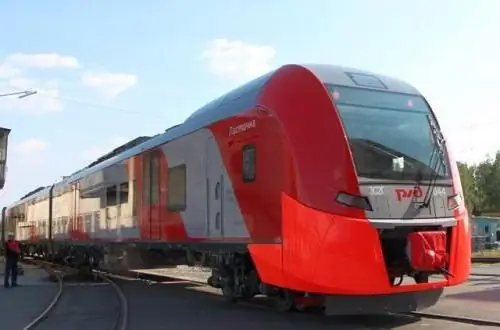- Author Harold Hamphrey [email protected].
- Public 2023-12-17 10:06.
- Last modified 2025-06-01 07:20.
Capital cities differ from others by the presence of two branches of government in them: federal and city. Every resident and guest of Moscow knows that the president and his team work in the Kremlin, on Red Square. City authorities have been located on Tverskaya Square for more than a century, which has repeatedly changed its appearance and name over the past time, but has always remained the central square of Moscow.
Appearance of the Square
The history of the square began after the construction of a house in this place for the city head - the governor general. This event took place in 1782, the famous architect M. Kazakov worked on the project, who built a new building in the style of classicism. A somewhat modified building is still the dominant feature of Tverskaya Square in Moscow. Redeemed by the treasury from the owner's heirs, it has forever become the residence of the Moscow administration.
The Moscow governor-general, reporting directly to the emperor, combined the duties of the head of the city and provincial authorities, the chief of policeand commander in chief. Therefore, his duties included the daily return of honors to the guard. For the convenience of this procedure, a parade ground was built under the windows of the governor's house, which later became a city square.
Tverskaya - Skobelevskaya Square
It got its first name from the name of the street that crossed it. In the 19th century, the area was actively built up. In 1823, directly opposite the governor's palace, the building of the police station was built. In many photographs of Tverskaya Square, you can see an Empire-style building with columns and a fire tower. The police department shared premises with the fire station. Forming the contour of the square, rich residential buildings and city hotels began to be built.

The memory of the general of the tsarist army, the hero of the Russian-Turkish war, a participant in many campaigns on the 30th anniversary of his death, it was decided to perpetuate the monument. By decree of the emperor, Tverskaya Square in Moscow, which became Skobelevskaya since 1912, was chosen as the site of construction.
Sovetskaya Square
The Bolsheviks dismantled the monument to the “White General” Skobelev in 1918, and the square was renamed Sovietskaya, since the Moscow Council was now located in the former governor's house. In place of the rider on a horse, a monument to Freedom and the Constitution, 26 meters high, was erected. On the edges of the obelisk one could read excerpts from the Main Law of the country. For many years, the monument was a symbol of the city, being present on its coat of arms.

During the reconstruction of Tverskaya Square in 1923The building of the police station was dismantled, but the columns, forming propylaea, decorated the space for some time. Behind them was a park with a fountain.
In 1927, a new building of the Institute of Marxism-Leninism, designed by S. Chernyshev, appeared in the north of the square. A monument to V. I. Lenin was erected in front of him in 1940.

Since 1937, a large reconstruction of Gorky (Tverskaya) Street began. The houses that stood along it began to be actively rebuilt and built on. The street itself has also widened. And it turned out that the governor's house goes beyond the "red stripe". For four months, work was underway to prepare the relocation of the building, the very displacement of the house, together with the basement, was not noticed by the employees for 40 minutes, who did not stop their work for a minute.
The crumbling monument to Liberty and the Constitution was dismantled in 1940. Until the end of the war, the area retained this appearance. With Pobeda, the reconstruction of the square was continued.
Return of historical name
Not far from the building of the Moscow City Council, a six-story building of the Ministry of Education is being erected, and the former governor's house itself, trying to catch up with it, is growing by two floors. The superstructure is not easy to notice, the work was done so professionally. Both facades are made in the same style of classicism. The building of the Moscow City Council, painted red, still dominates the composition.
In 1947, it was decided to strengthen the visual perception of the symbols of city power on Tverskaya Square in Moscow. A stone was laid here for the 800th anniversary of the city.foot of the future monument to the founder of Moscow and "its first governor" Yuri Dolgoruky. It took seven years to prepare, coordinate and complete the work. In June 1954, the square was decorated with a rider in chain mail with a shield in his hands. On the shield is the coat of arms of Moscow.

Since 1994, after the collapse of the Soviet Union, the square was returned to its historical name, and the team of the mayor of the city moved to the building of the former Moscow City Council. Tverskaya Square is located near the Tverskaya and Pushkinskaya metro stations.






